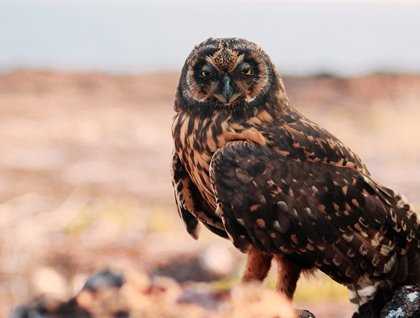Our last day of this week’s expedition took us all the way north to Genovesa, or Tower Island, one of the most pristine islands in the archipelago north of the Equator—an island considered a paradise for birds, and a spectacular location to see hundreds of frigatebirds, red-footed boobies, Nazca boobies, and many other species.
Early in the morning, at around 0600, we entered into the bay, a huge submerged caldera of this ancient dormant volcano where hundreds of birds were flying around.
During our morning visit, we went to Darwin Bay. This site along a coralline beach offers an easy walk and fantastic views of a nesting colony of great frigatebirds and red-footed boobies. Few places on Earth offer such close encounters with these amazing seabirds. Watching the male frigatebirds displaying their red balloons and desperately courting the females made us wonder how species develop such fascinating breeding strategies. Red-footed boobies were just starting their nesting season and repeatedly we saw those bringing branches and nesting materials to their mates.
Nazca boobies were not courting, but you could see them close to the trail and nesting sites, so probably they were almost ready to start. At the end of the trail, we reached some tide pools, where a sea lion was playing and some yellow crowned night herons and striated herons were looking for food: fish, fiddler crabs, and perhaps some distracted Sally Lightfoot crabs. It was a fantastic walk followed by a kayaking and a very relaxing deep-water snorkeling outing along the cliffs of Darwin Bay, where new species of fish were discover by our guests.
In the afternoon we headed to a different landing site known as Prince Philip's Steps, after the Duke of Edinburgh. After climbing a steep, narrow fissure to the cliff top, the trail took us through a palo santo forest, passing boobies and frigates nesting along the way, to a storm petrel colony located on the open side of the island. Here, we were looking for the short-eared owls, a fascinating bird that only here has the ecological role of the top predator of the island because the Galápagos hawk never colonized Genovesa. We were lucky enough to encounter not only one but more than five owls this afternoon, some very close to us that it is hard to imagine these are wild animals.
This was an incredible week for our guests, with so much information, anecdotes, and experiences to recall, along with a deep and better appreciation for nature. This is Galápagos, a good example of nature at is best!









